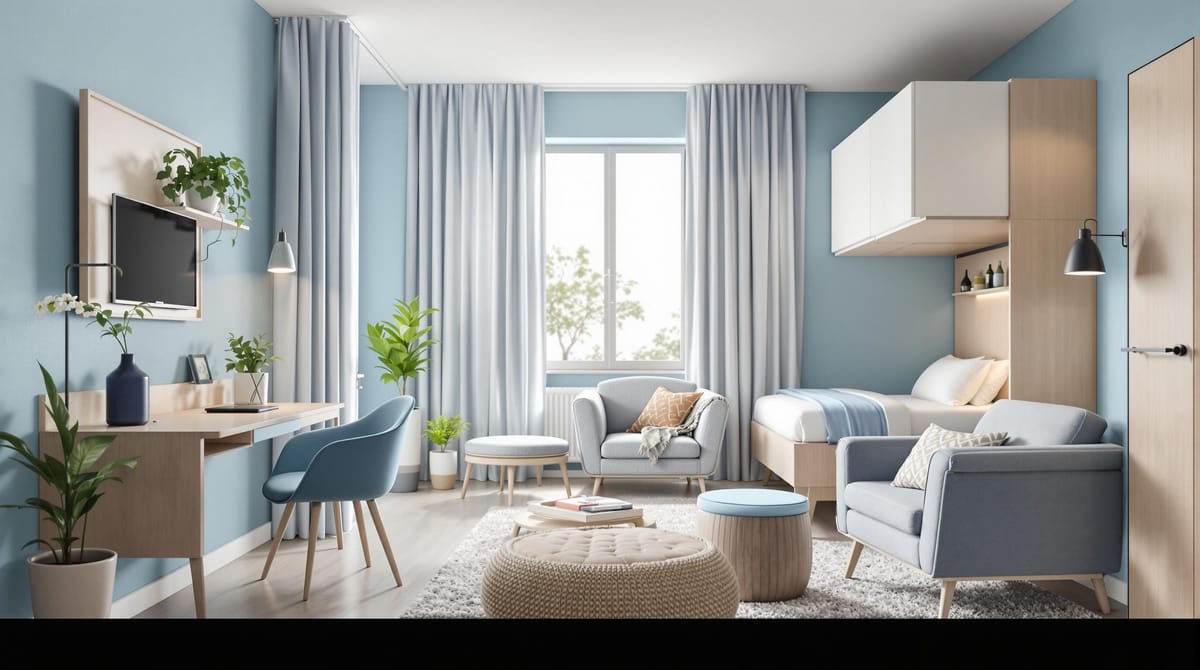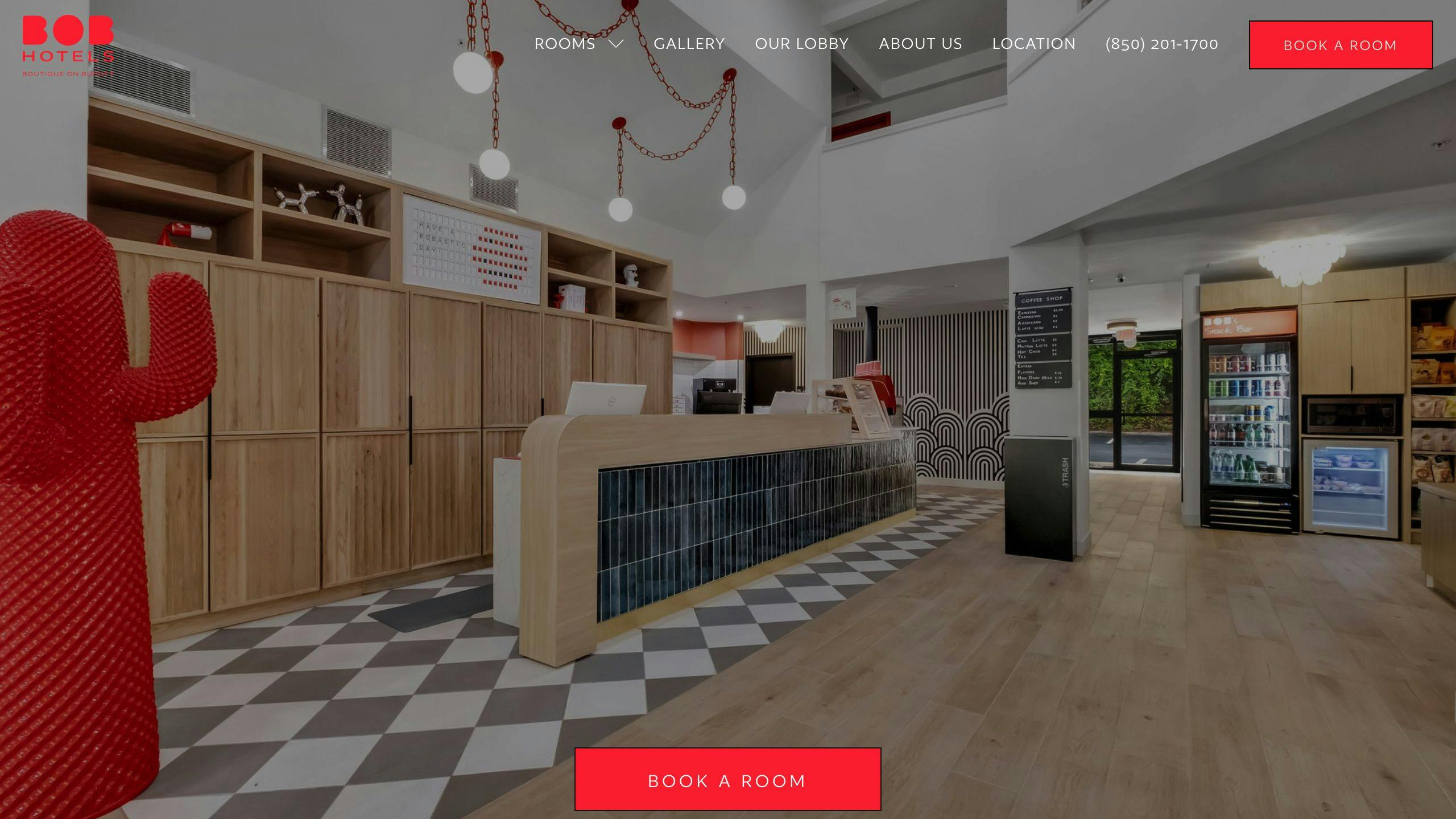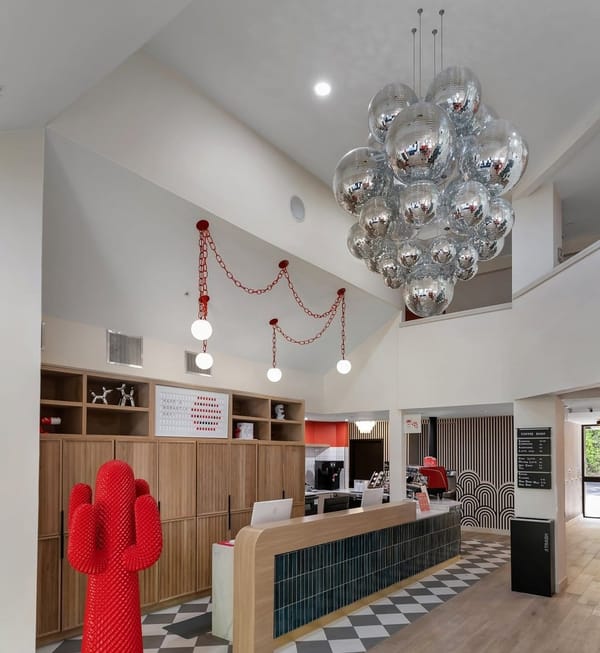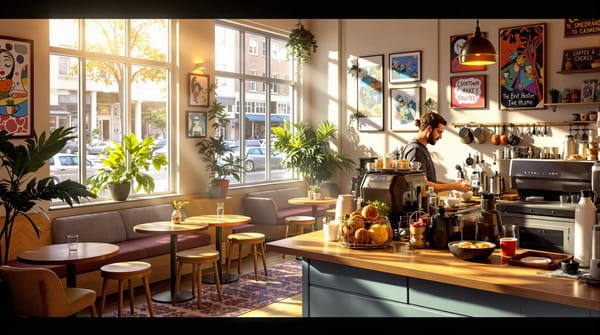How to Maximize Space in Small Hotel Rooms
Explore smart design and furniture choices to maximize space in small hotel rooms, ensuring comfort and functionality in limited areas.

Maximizing space in small hotel rooms is all about smart design and clever furniture choices. Here’s how hotels can make even the smallest rooms feel open and comfortable:
- Multi-purpose furniture: Beds with drawers, foldable desks, and convertible sofas save space and add functionality.
- Integrated storage: Use under-bed compartments, wall-mounted shelves, and hidden headboard storage.
- Vertical space: Add tall shelves, wall hooks, and mount TVs to free up floor space.
- Mirrors and lighting: Strategically placed mirrors and layered lighting create the illusion of a larger, brighter room.
- Sliding doors: Replace traditional doors with sliding options to improve room flow.
Hotels like CitizenM and YOTEL use modular furniture and tech-driven solutions like robotic luggage storage, while BOB Hotels Tallahassee combines space-saving designs with guest comfort. These strategies ensure small spaces are functional, stylish, and clutter-free.
Space Saving Furniture and Murphy Bed Solutions
Common Space Issues in Small Hotel Rooms
Small hotel rooms come with their own set of challenges, often affecting guest comfort and overall satisfaction. Recognizing these issues can help hotels make better use of limited space and improve the guest experience.
Lack of Storage
Limited storage can be a major frustration for guests [1]. Without enough room for luggage, personal items, and clothing, staying organized becomes a struggle. Minimal closet and drawer space often leaves guests living out of their suitcases. On top of that, small bathrooms with little counter or shelf space can quickly feel cluttered and chaotic.
Balancing Looks and Usefulness
Creating a room that's both functional and visually appealing is no easy task. Hotels need to carefully choose furniture and design elements that strike the right balance [4].
"The challenge lies in incorporating multi-functional furniture and integrated storage solutions without making the room feel like a storage unit", says an expert from Omland Hospitality [2].
To achieve this balance, hotels often focus on:
- Including only the most essential amenities to avoid overcrowding
- Using storage solutions that seamlessly blend into the room's design
- Opting for furniture that serves more than one purpose, like beds with built-in drawers or foldable desks
Some hotels have embraced modular furniture and creative layouts to make the most of small spaces. These approaches show that it's possible to combine practicality with style, meeting guest needs without compromising on design.
The next section will dive into how innovative furniture and smart design choices can help solve these space challenges.
Effective Design and Furniture Solutions
Smart furniture choices and clever design strategies can turn even the smallest hotel rooms into cozy and practical spaces.
Furniture with Multiple Uses
CitizenM hotels have introduced modular furniture systems that adapt to guests' needs [2]. For instance, their rooms feature convertible sofas that double as workstations during the day and transform into beds at night.
Multi-purpose furniture should be both practical and user-friendly. Examples include foldable wall desks, ottomans with hidden storage, convertible tables, and Murphy beds that help maximize floor space.
Integrated Storage Solutions
Hotels are moving away from traditional closets, opting for space-saving storage alternatives. YOTEL has taken this a step further with robotic luggage storage systems [2], which not only conserve space but also add a modern, tech-savvy element to the guest experience.
Common integrated storage ideas include:
- Beds with built-in drawers
- Hidden compartments in headboards
- Wall-mounted shelves
- Under-window storage benches
Using Vertical Space
Making use of wall height is a smart way to add storage without sacrificing floor space. Tall shelves, wall hooks, floating nightstands, and high-mounted TVs are all practical options.
Mounting curtains near the ceiling is another popular tactic. This makes windows appear taller and rooms feel more open [5].
While furniture and storage solutions focus on functionality, well-thought-out design details can further enhance the overall sense of comfort and space for guests.
Design Techniques to Enhance Space Perception
Using Mirrors Effectively
Mirrors are a powerful tool for transforming a room. When placed strategically, they can amplify natural light and make spaces feel larger. For example, full-length mirrors positioned opposite windows not only reflect daylight but also create a sense of depth [3]. To get the best results, ensure mirrors reflect natural light or visually appealing features - steer clear of placing them where they might highlight cluttered areas.
Choosing the Right Lighting and Colors
Lighting and color choices play a major role in how a space feels. Layered lighting combined with light, neutral tones can make a room appear more open and inviting [2]. Start by maximizing natural light, then enhance it with well-placed artificial lighting.
A balanced lighting setup includes:
- Ambient lighting: General illumination, like ceiling fixtures.
- Task lighting: Focused light for specific activities, such as bedside lamps.
- Accent lighting: Adds dimension and highlights design elements, like wall sconces.
For color, stick to neutral shades and light hues to create an airy, spacious effect.
Switching to Sliding Doors
Traditional swing doors can eat up precious space. Many modern hotels are solving this issue by using sliding doors for areas like bathrooms and closets [2]. This choice offers several advantages:
- Frees up space by removing door clearance needs.
- Improves sight lines for a cleaner look.
- Allows for more flexible furniture arrangements.
- Enhances the overall flow of the room.
CitizenM hotels have embraced this concept by incorporating sliding glass partitions in their compact rooms [2]. Often made with frosted glass, these partitions maintain privacy while still allowing light to pass through.
"The use of sliding doors and layered lighting helps to create a sense of depth and make the rooms feel more spacious", says a design expert from BOB Hotels Tallahassee, where these approaches have been successfully applied to boutique-style accommodations [2].
These strategies not only optimize space but also elevate the guest experience, offering a smart balance of style and practicality. For hotels aiming to blend aesthetics with functionality, these ideas are a win-win.
Case Study: BOB Hotels Tallahassee's Approach to Space

BOB Hotels Tallahassee showcases how even small spaces can be turned into functional and stylish accommodations by applying smart design principles.
Room Design Features
This boutique hotel uses clever space-saving techniques like wall-mounted TVs and furniture designed for dual purposes. Here's how they make the most of limited square footage:
- Wall-mounted furniture: Clears up floor space for a more open feel.
- Built-in storage: Includes under-bed compartments and wall-mounted shelves for efficient organization.
- Multi-functional furniture: Pieces that serve more than one purpose, balancing form and function.
The hotel also prioritizes guest comfort with luxury mattresses, proving that you don’t need a large room to provide a high-quality experience.
"Our design philosophy centers on creating spaces that feel expansive through smart furniture choices and built-in storage solutions", says Janis Krums, founder of BOB Hotels. "We've found that guests appreciate thoughtful design that prioritizes both comfort and functionality."
Additional Amenities
BOB Hotels extends the guest experience beyond individual rooms with carefully designed communal areas. Features like a café, cozy lobby, plunge pool, and bar create shared spaces for relaxation and socializing. This approach reduces the need for in-room amenities while enhancing the overall stay.
Tips for Guests to Maximize Their Stay
Making the most of a small hotel room begins with thoughtful packing and smart use of the available space. Here’s how you can stay organized and comfortable during your visit.
Smart Packing
Packing light can make a big difference in keeping your room tidy. Tools like packing cubes can shrink your luggage size by up to 30% while keeping your belongings organized. Stick to versatile clothing that can be mixed and matched for multiple outfits. A simple rule like "one in, one out" helps prevent clutter during your trip.
| Item | Why It Helps |
|---|---|
| Packing Cubes | Compresses clothing and keeps items organized |
| Versatile Clothing | Cuts down on the number of items needed |
| Travel-size Toiletries | Saves space in the bathroom |
Using Hotel Storage
Take advantage of your room’s storage features. Unpack as soon as you arrive to keep your items organized and wrinkle-free. Store larger items like suitcases in under-bed drawers, freeing up floor space.
For essentials, make use of vertical storage options like shelves. Keep valuables and electronics secure in the in-room safe, and use shelves or hooks for easy access to chargers, toiletries, or other frequently used items.
Conclusion: Making Small Hotel Rooms Work
Clever design can turn even the smallest hotel rooms into practical and welcoming spaces. For example, Tru by Hilton has reimagined room layouts by removing traditional closets and adding smart storage solutions to maximize comfort.
"The key to designing a smaller guestroom is to make efficient use of the space to ensure both functionality and comfort." - Alexandra Jaritz, Global Head of Tru by Hilton [6]
Features like multipurpose furniture, smart storage options, natural lighting, and tech-focused amenities help create a balance between usability and comfort without needing extra space. BOB Hotels Tallahassee showcases this with luxury mattresses that include under-bed storage, smart TVs, and well-thought-out layouts. They extend this comfort to shared areas like a cozy lobby and café.
Minimalist designs and space-saving solutions are becoming increasingly popular in urban markets, where guest satisfaction often depends on how well the space is utilized [6]. Brands like CitizenM and YOTEL highlight this trend with modular furniture and high-tech designs, proving that small rooms can still feel stylish and comfortable [2]. These concepts build on earlier ideas like multipurpose furniture and vertical storage, showing how thoughtful design can make even tight spaces feel functional and inviting.
FAQs
Here are answers to common questions about optimizing small hotel spaces.
How can I add more storage to small spaces?
Using furniture with built-in storage, like beds with drawers or ottomans with compartments, is a great way to increase storage. Wall-mounted shelves and vertical storage units also help save floor space while keeping things organized [4][2].
How should mirrors be used to make a room feel bigger?
Position mirrors across from windows to reflect natural light and create the illusion of a larger area. Full-length mirrors can also double as functional items while opening up the visual space [1].
What can guests do to make the most of their room?
Take advantage of storage options like under-bed drawers and wall-mounted shelves. Unpacking your belongings upon arrival helps reduce clutter and ensures essentials are easy to find.
What design features help small rooms feel more open?
Using light-colored walls, hanging curtains high, and opting for sliding doors can make a room feel brighter and more spacious [5].
"The key to designing a smaller guestroom is to make efficient use of the space to ensure both functionality and comfort." - Alexandra Jaritz, Global Head of Tru by Hilton [6]
What are some creative hotel space-saving ideas?
Hotels are incorporating modular furniture and robotic storage systems to make the most of limited space [2].
How can vertical space be utilized effectively?
Adding shelves, hooks, or fold-down furniture makes the most of vertical space while keeping the floor area clear [4][2].




